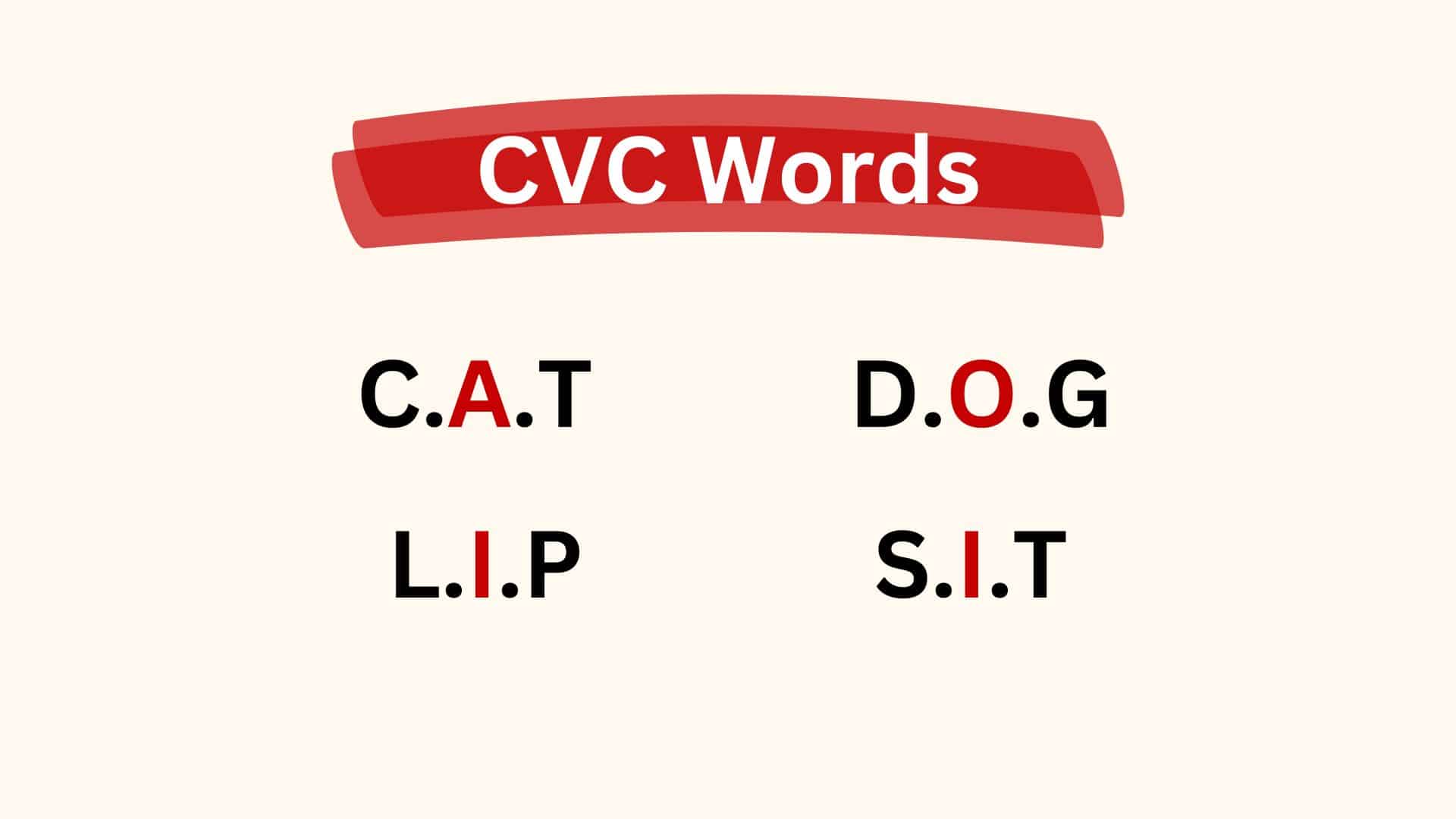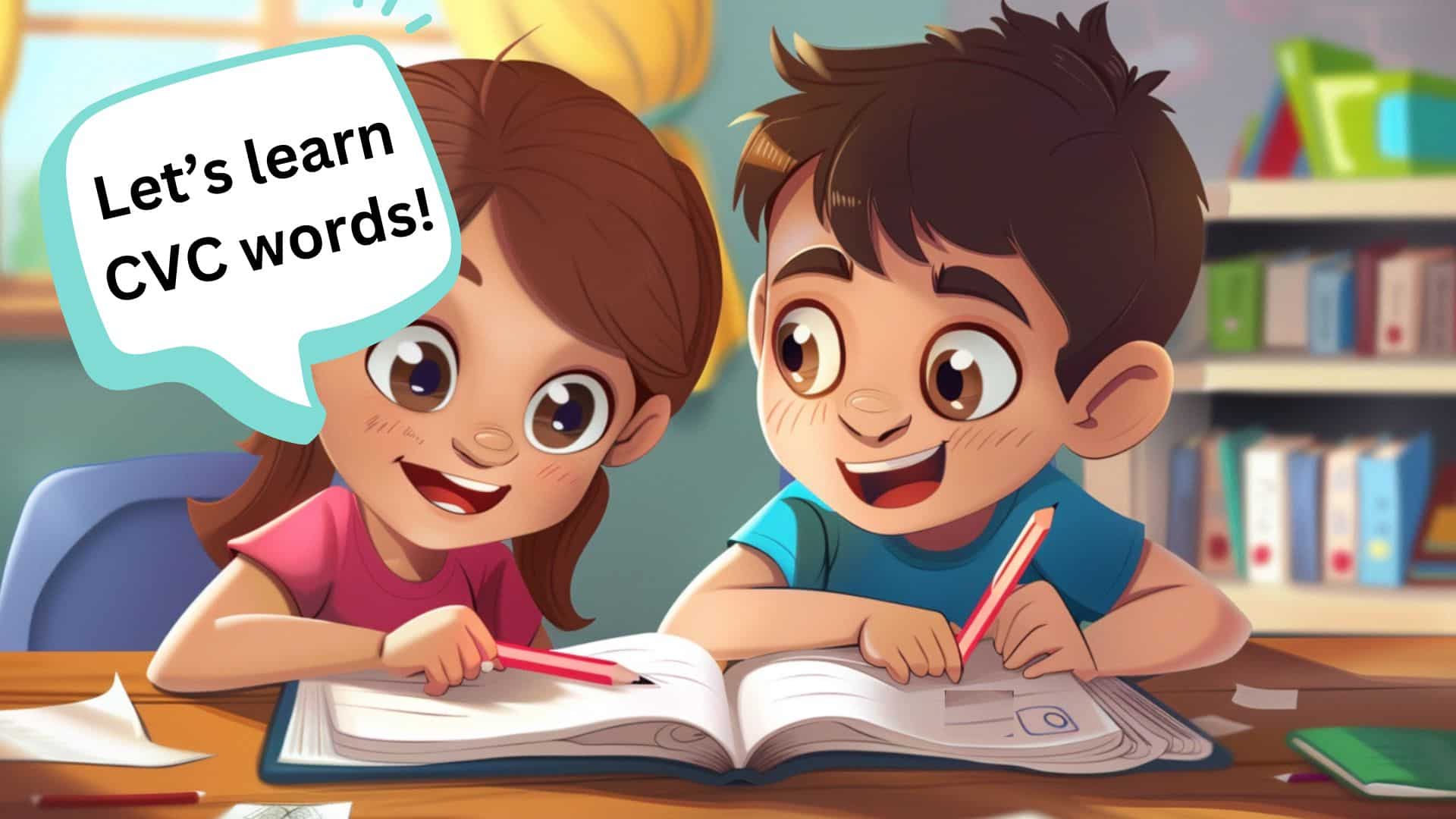Learning a language is very important; it helps communicate and express one’s feelings.
The foundation of the language learning process must be very strong, especially for young children who will learn to read words and sentences for the first time!
The first step is introducing your child to CVC words.
Consonant Vowel Consonants (CVC) are significant for building with the alphabet’s combination of vowels and consonants.
Making new words helps your child to enhance reading, writing, spelling, and speaking skills in further education.
In this blog post, we will explore CVC sentences, why they are important to teach, and how to effectively teach them to young readers.
What are CVC Words and Sentences?
CVC words are single-syllable, three-phoneme words that follow the pattern of consonant, vowel, and consonant sounds.
In the English language, the letters a, e, i, o, and you are vowels, and the rest of the letters are consonants.
These short-letter words are easy to pronounce and are in the early stages of building letters to form words.
Once your child has learned the sequence of the alphabet, they will learn how to put the alphabet into a short word to make a CVC sentence.
CVC sentences are incorporated with CVC words that help the child read the sentences easily.
That way, your child will find the easy steps to remember and see how the words and sentences build.
Importance of CVC Words in Learning English

Teaching CVC words introduces students to the magic of transforming simple sounds into words and words into sentences, which is an integral part of any pre-reading program.
The aim is to use children’s knowledge regarding individual letter sounds to blend those sounds and create a whole word, not just three separate sounds.
Learning about CVC words and sentences is an important tool in phonics as it can help children with reading, writing, and rhyming.
1. Increases Phonemic Awareness
Sentences with CVC words are excellent resources for enhancing phonemic awareness and recognizing and working with particular sounds within sentences.
Because of their unique and predictable sound structures, CVC words in sentences help improve phonemic awareness and language learning.
Example: Practising CVC words like “cat” and c helps children identify the distinct sounds of the /c/, /a/, and /t/ phonemes, enhancing their auditory discrimination skills.
2. Enhanced Reading and Fluency
Mastering CVC words helps children to enhance their reading and fluency skills.
CVC words make it easy for children to read sentences, eventually enhancing their reading skills.
As children become familiar with CVC sentences and words, they gain confidence in recognizing and decoding them, setting the stage for successful reading experiences.
Early readers develop simplicity in word recognition and fluency in reading by repeatedly coming across CVC words in understandable sentences.
This fluency lays the foundation for easily comprehending more difficult texts.
Research continuously supports the idea that learning CVC words expedites reading preparation.
For example, Children naturally progress to more complicated words when they learn CVC words like “run” and “sun,” which enhances their reading comprehension and fluency.
3. Building Confidence
Decodable CVC sentences offer early readers a sense of achievement and success.
As children decode and read sentences incorporated with CVC words, they experience a boost in their confidence and self-esteem.
This positive reinforcement encourages them to tackle even more challenging texts and motivates them to practice more and more.
4. Progress Monitoring
Using decodable sentences allows teachers to assess students’ progress quickly and easily.
By observing a child’s ability to decode and understand CVC words within sentences, teachers or parents can identify areas of strength and areas that require further support.
The information you get from using these types of sentences can guide instructional planning and will help you differentiate lessons to meet your individual student’s needs.
Fun Teaching Exercises for CVC Words

There are useful strategies and exercises you can do to help your kids learn CVC words and immediately begin building new words.
Your child’s engagement and confidence in learning new phrases will develop using various strategies and learning methods.
Among the most important techniques are:
1. Matching Pictures and Words
The child is randomly given a set of CVC words and pictures in this activity.
The children have to match the appropriate word to each image.
Children may only be able to identify sight words without reading them. As a result, there is no guarantee that they will always understand spelling and sounds through this practice.
You can also use flashcards with images of CVC words. The child needs to identify the correct word from the options.
2. Blending Letters to Make Words
If you spell a word, kids should be able to blend the letters orally and say the word.
A fun way of doing this exercise is to talk in spelling using simple CVC words.
For instance, you can tell the child, “Give the d-o-g a treat” or “Use this p-e-n.” Again, it’s important to tickle the child’s curiosity by bringing up new spellings. Keep a list of CVC words handy.
3. Choose the Rhyming Word
Rhyming word games are a favorite among young readers and writers.
Educators and homeschoolers must maximize this opportunity to teach new letters.
You can start using rhymes as soon as they can identify and match letters and sounds that end in a row.
Showing them a picture of a CVC word and asking them to select the word from a list that rhymes with it is an easy yet entertaining way to practice rhyming words.
4. Starting Sounds
Select tones that you can maintain and increase.
The sounds “s,” “n,” and “m” are excellent beginning sounds as they can be kept.
Words with initial sounds like “sun,” “sip,” “nap,” “mop,” “man,” and so on are excellent ways to start teaching kids.
After the introductory sounds, you can proceed to terminate sounds.
5. Word Ladders
Word ladders are a fun practice in which a list of CVC words is arranged in a ladder-like style from top to bottom, with one letter missing from each word.
As they work their way up the ladder, children begin at one end and create one letter at a time.
This activity tests letters and their beginning and ending sounds. Youngsters are taught to use the ability to move sounds around to climb the word ladder.
Conclusion
Teaching CVC words and sentences is crucial in building a strong foundation for young readers.
Introducing these simple yet powerful building blocks, children develop phonemic awareness, enhance their reading skills, and gain confidence in their abilities.
Activities like matching pictures to words, blending letters, and word ladders make learning fun and effective.
As your child masters CVC words and sentences, they will be well on their way to becoming proficient readers and writers.
Remember, every small step counts in this incredible journey of language acquisition.
So, embrace the magic of CVC words and watch your child’s language skills soar!








